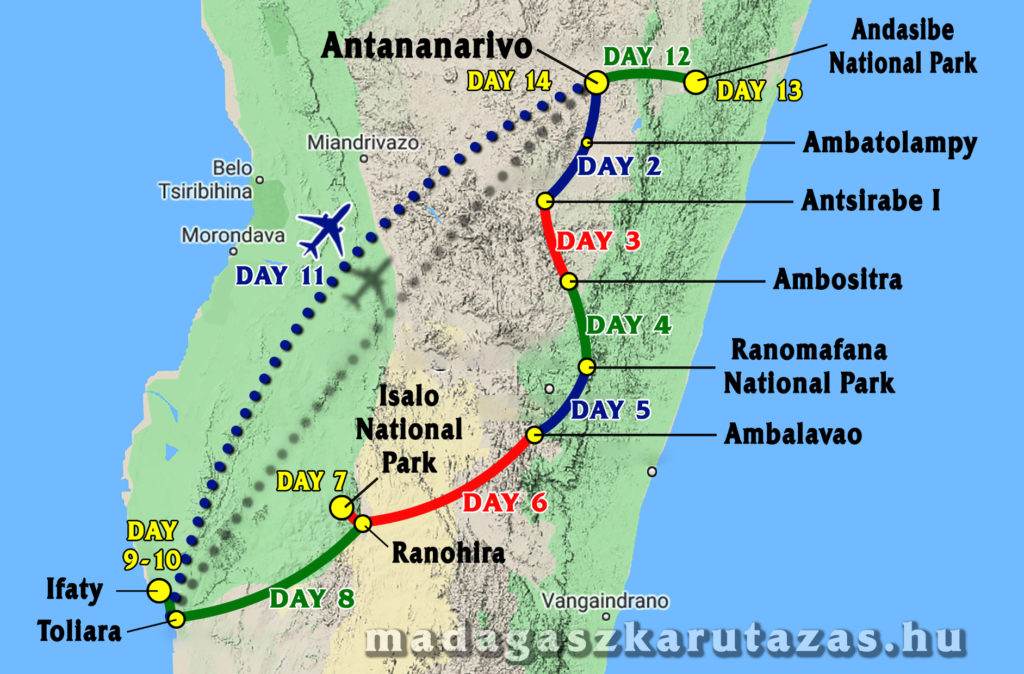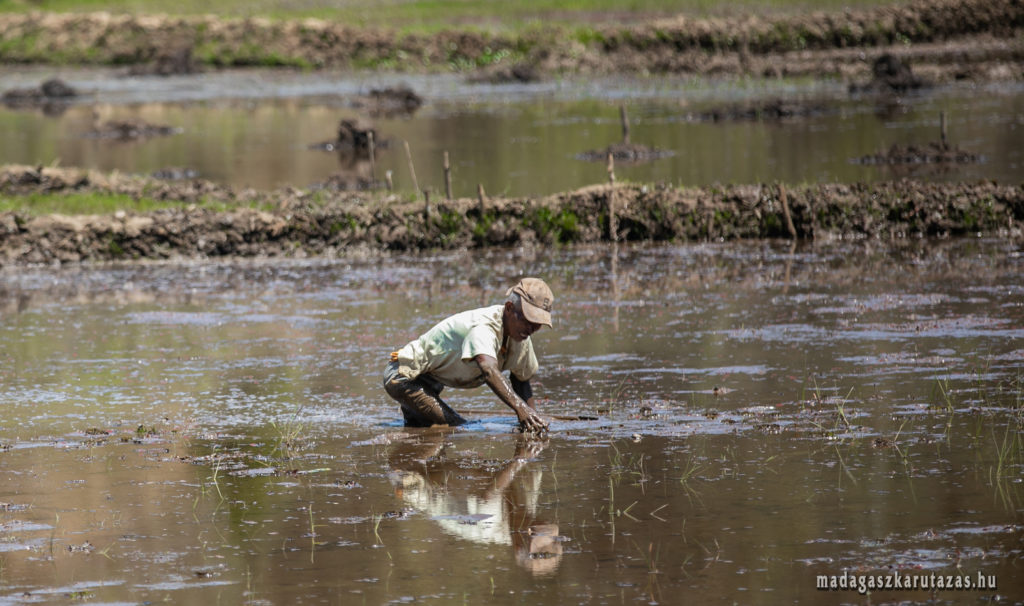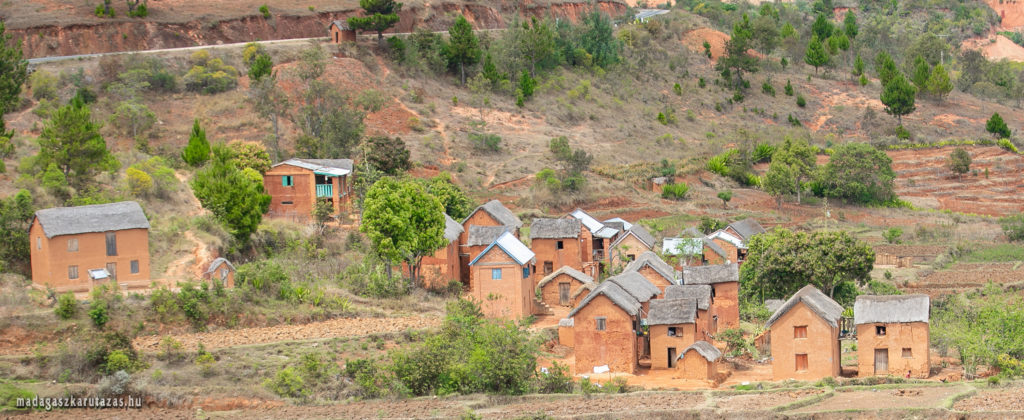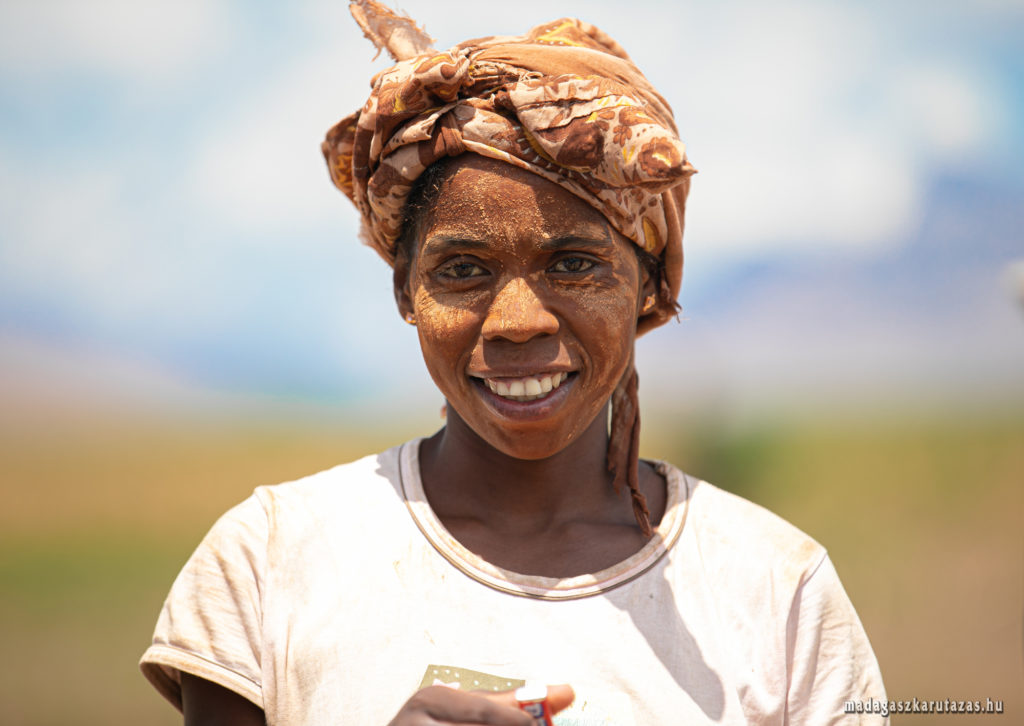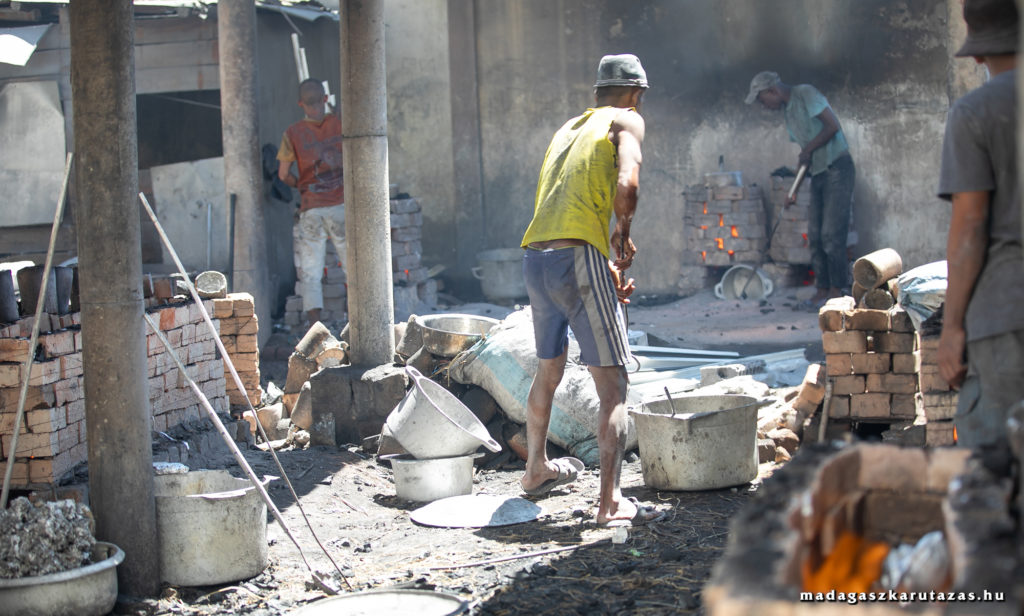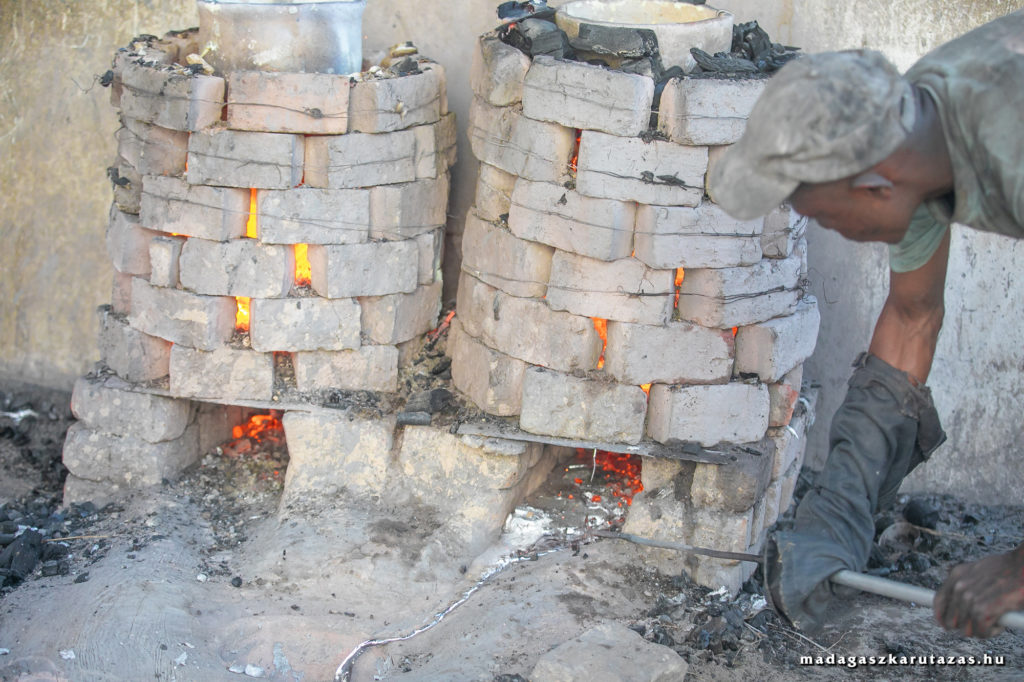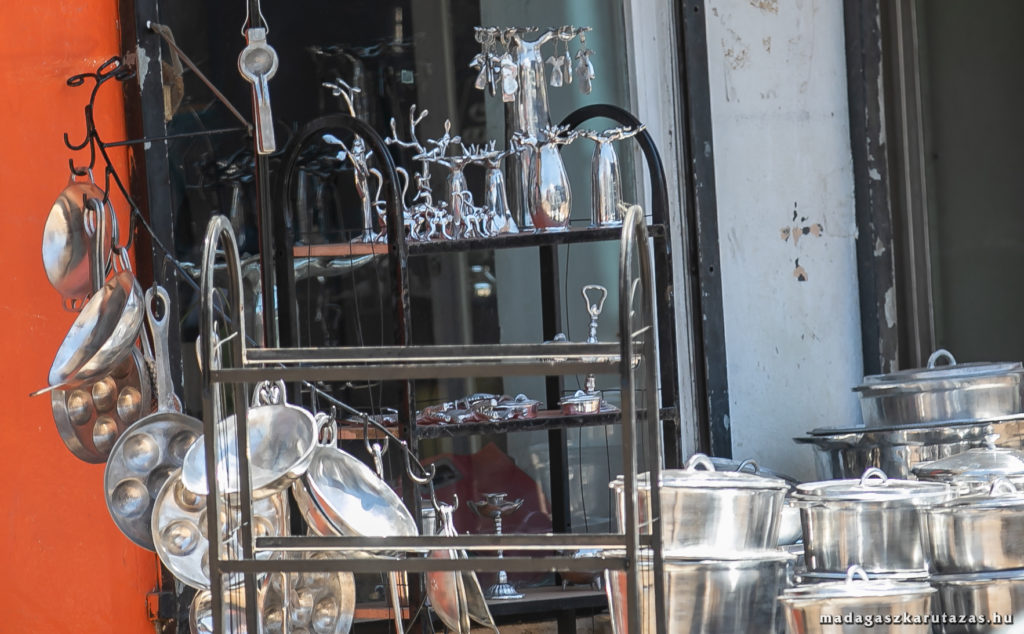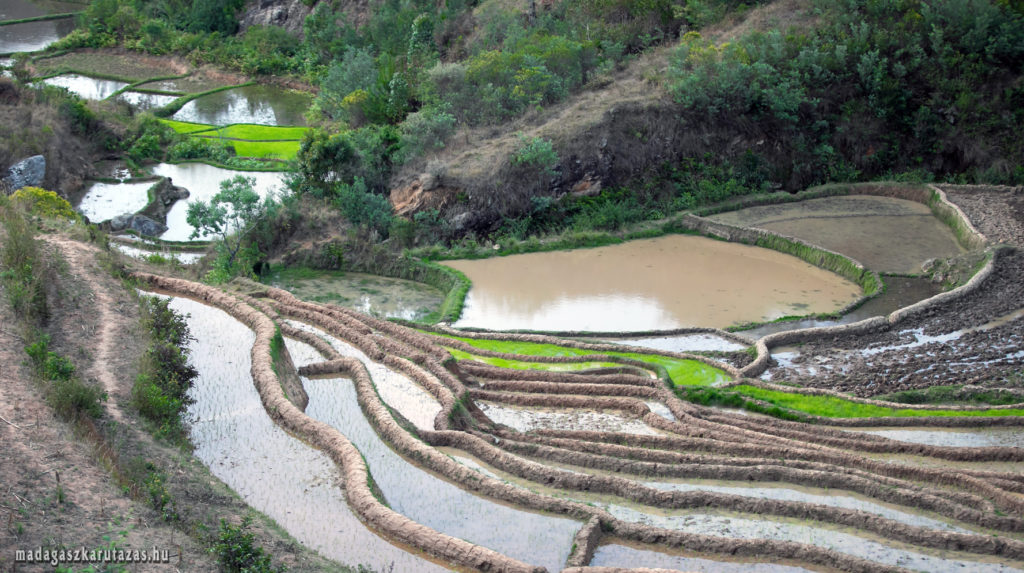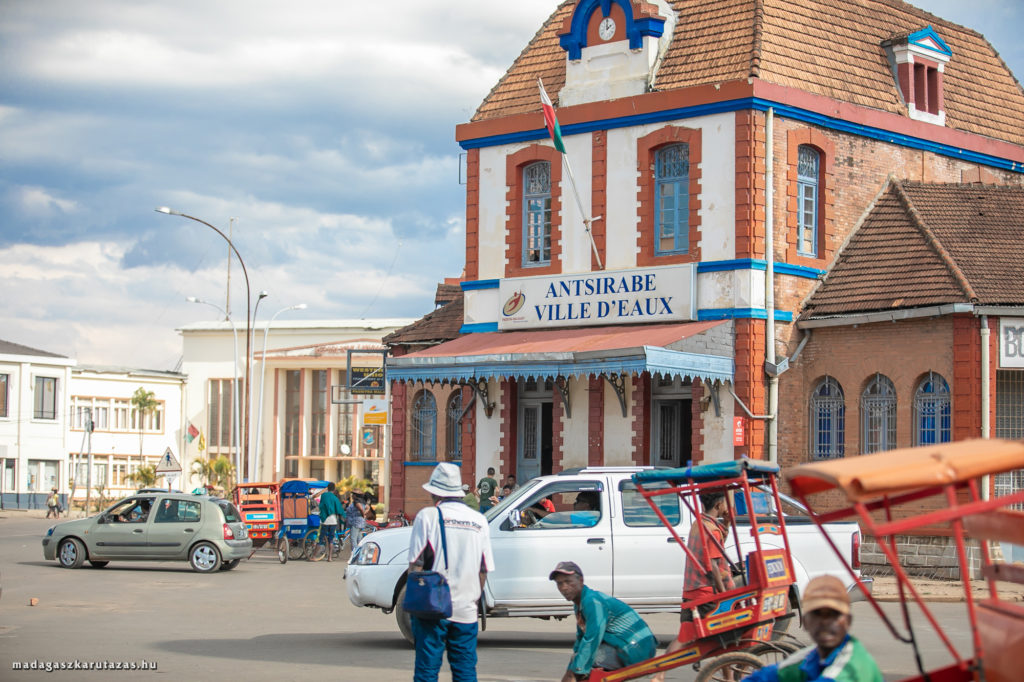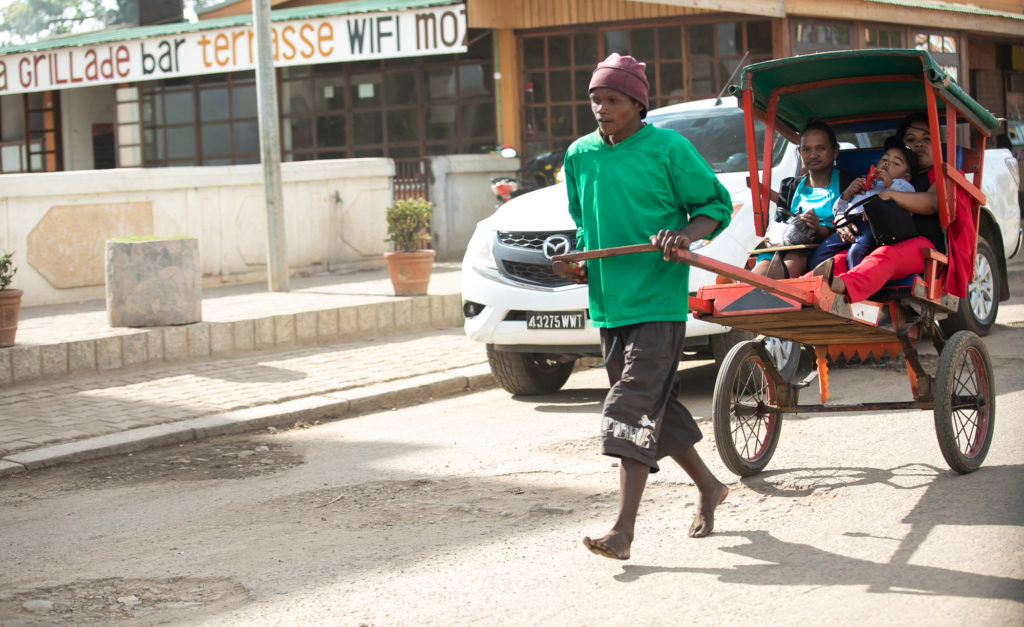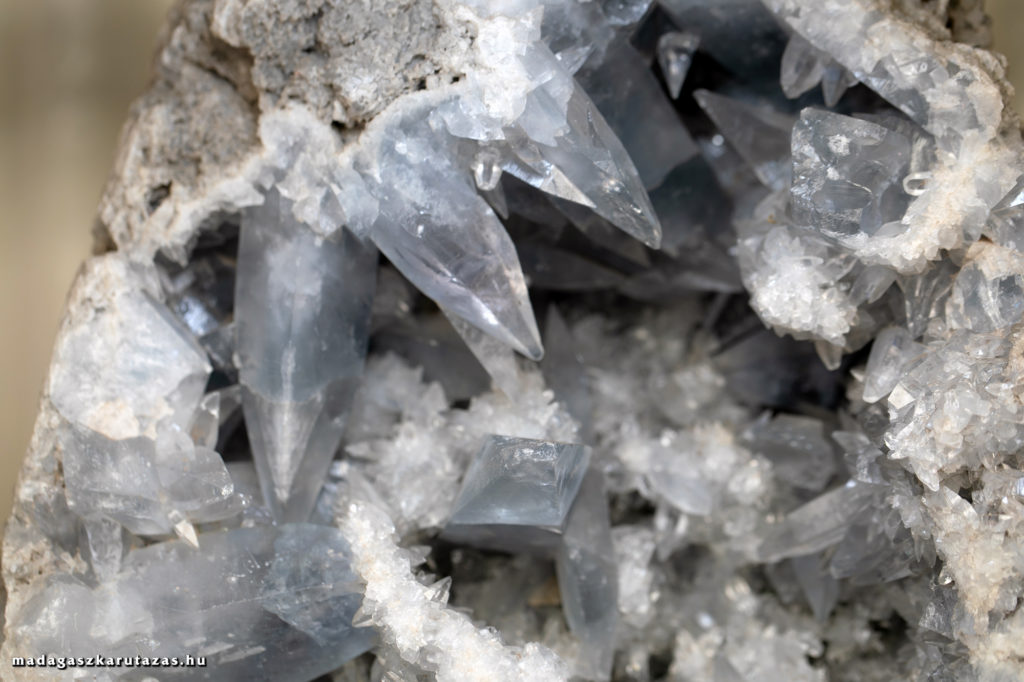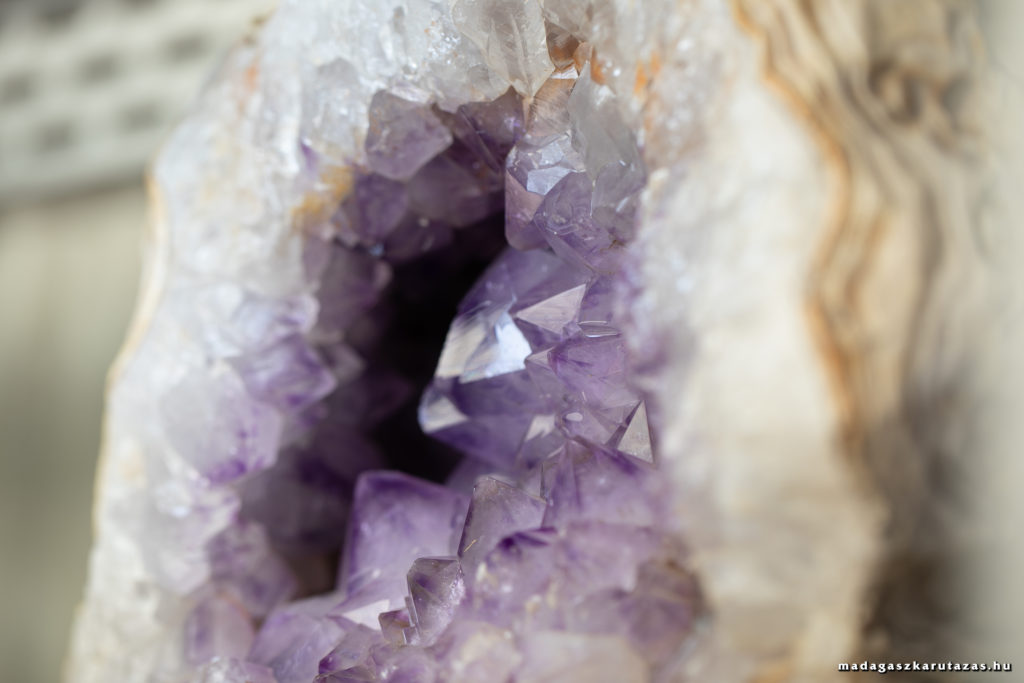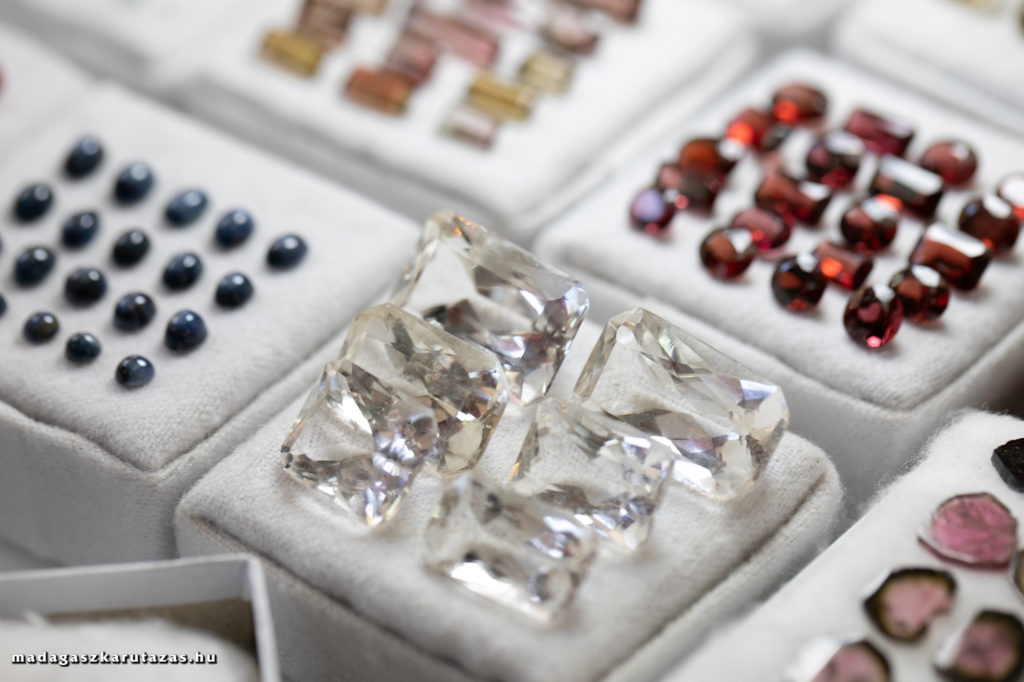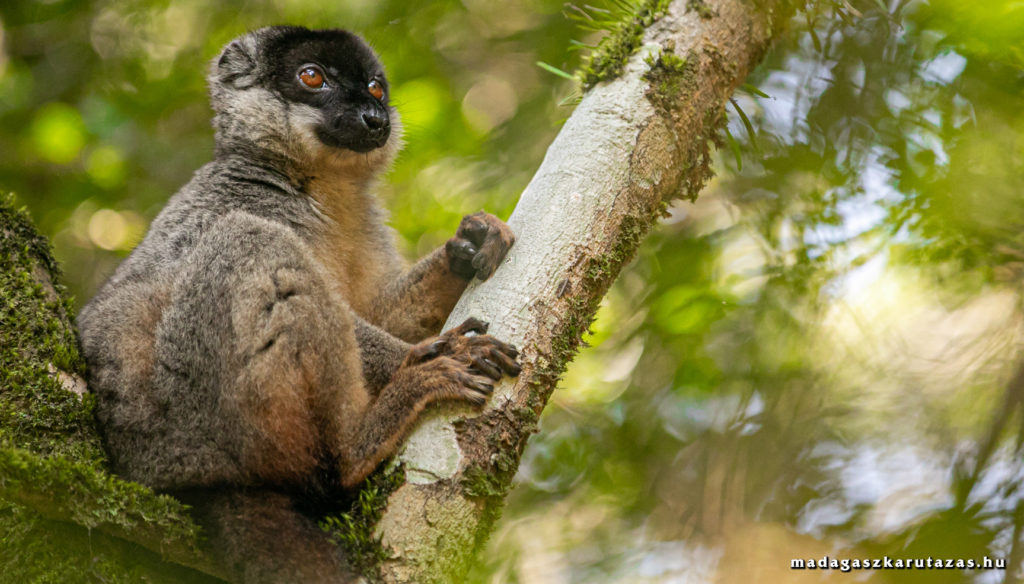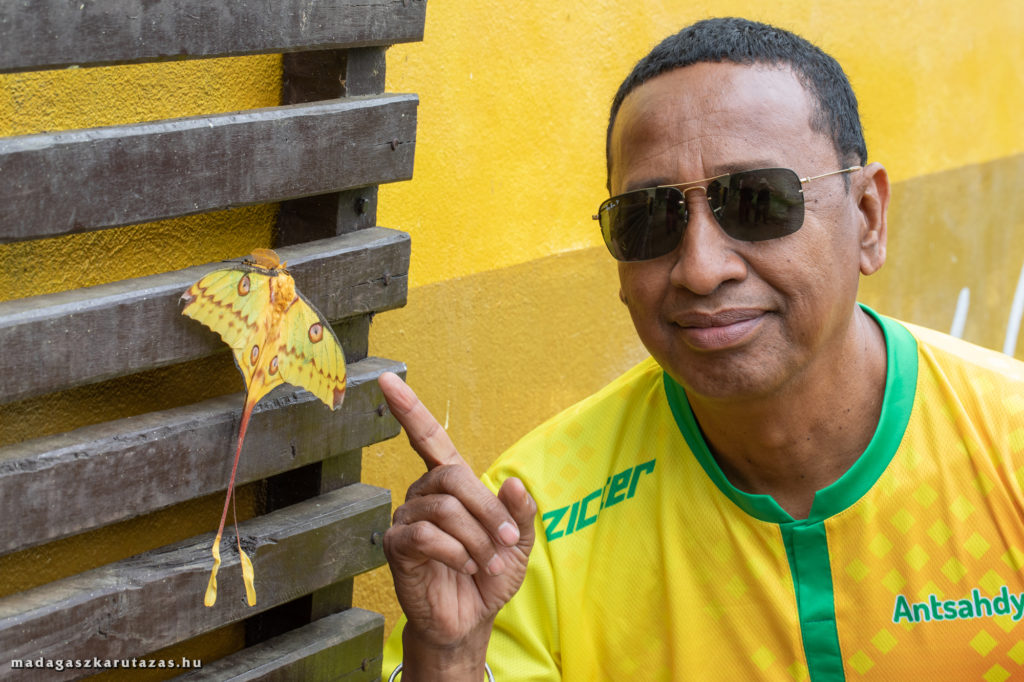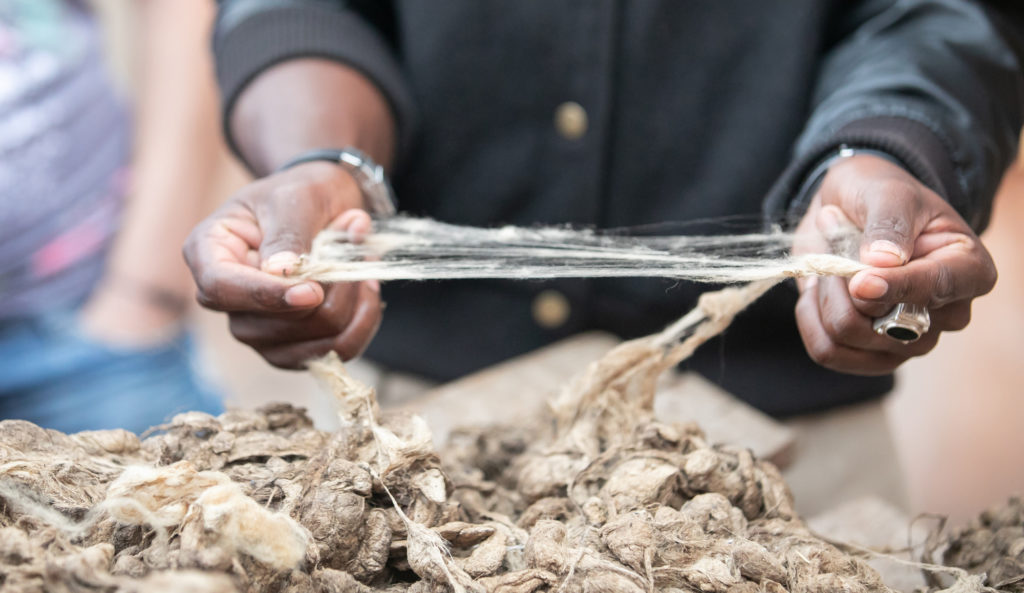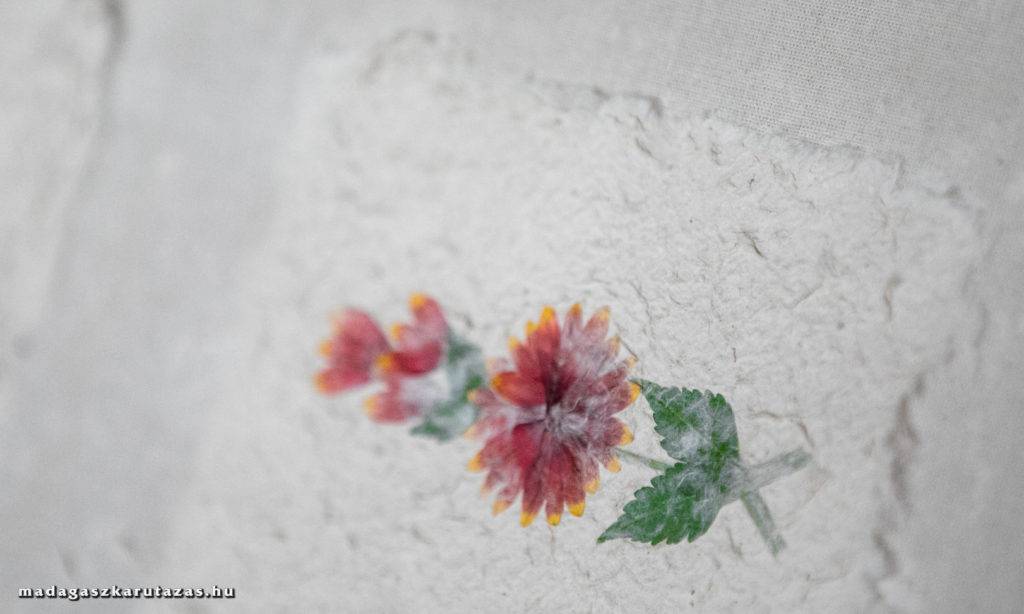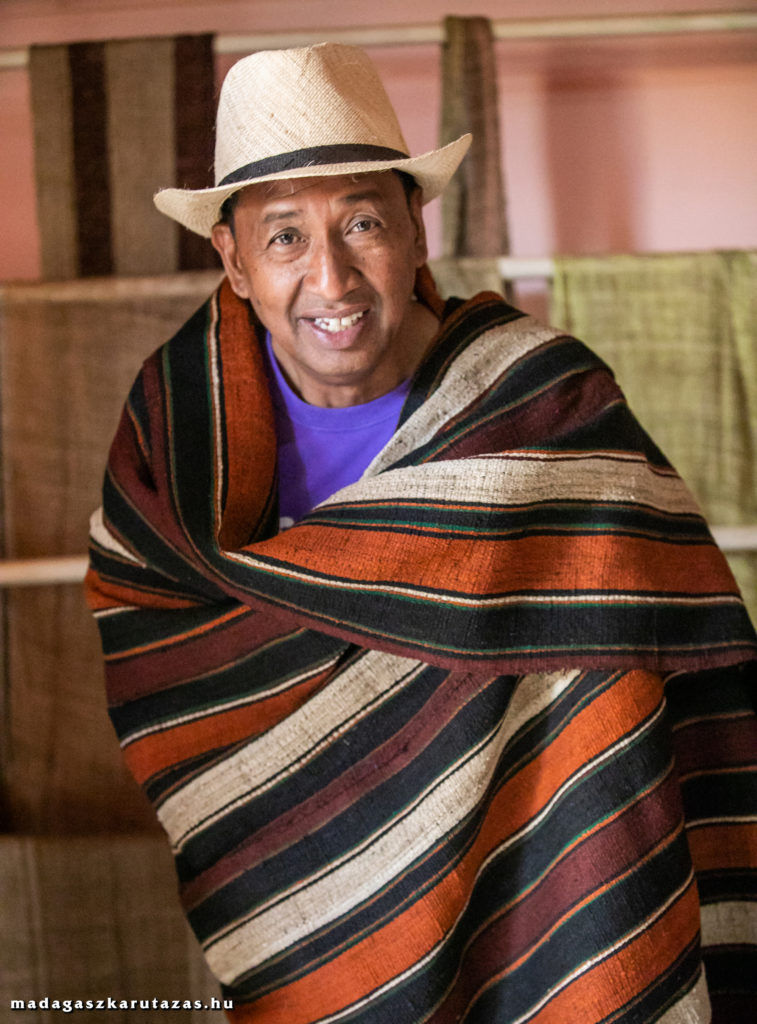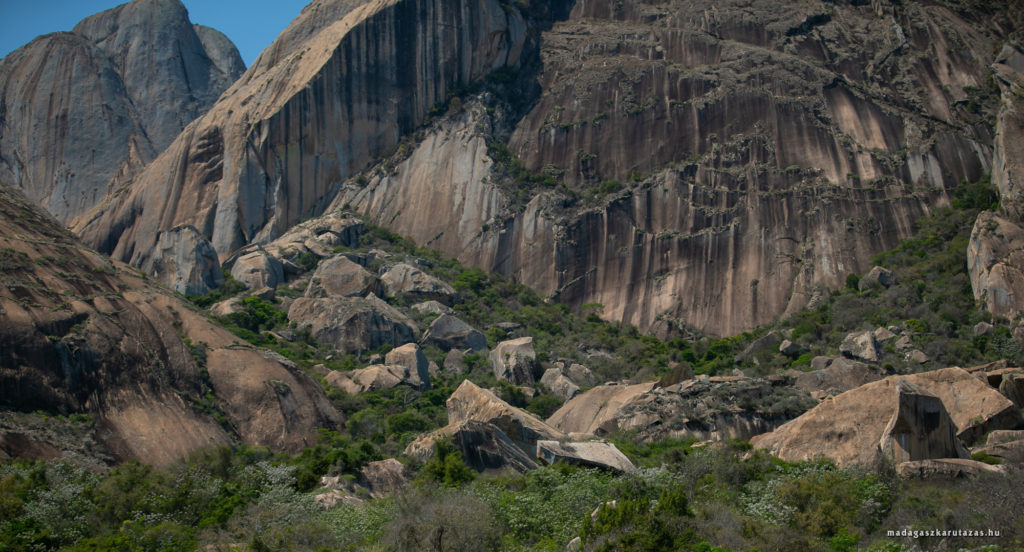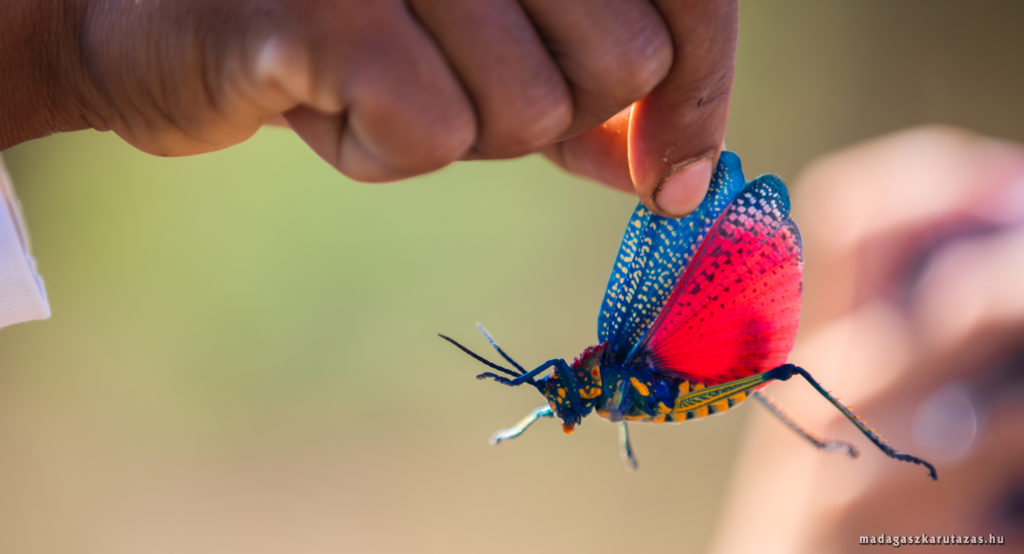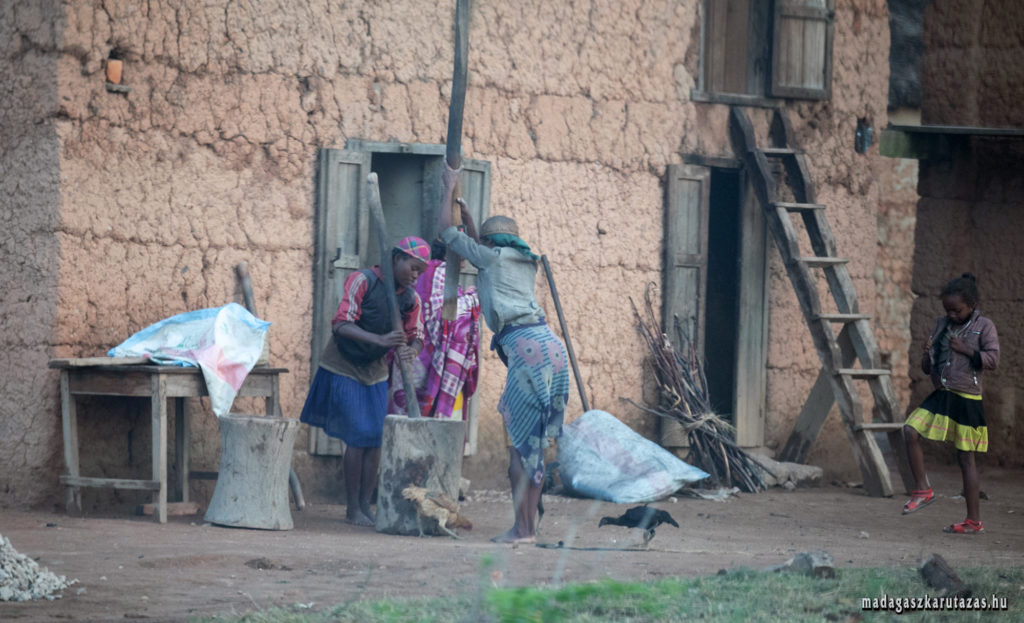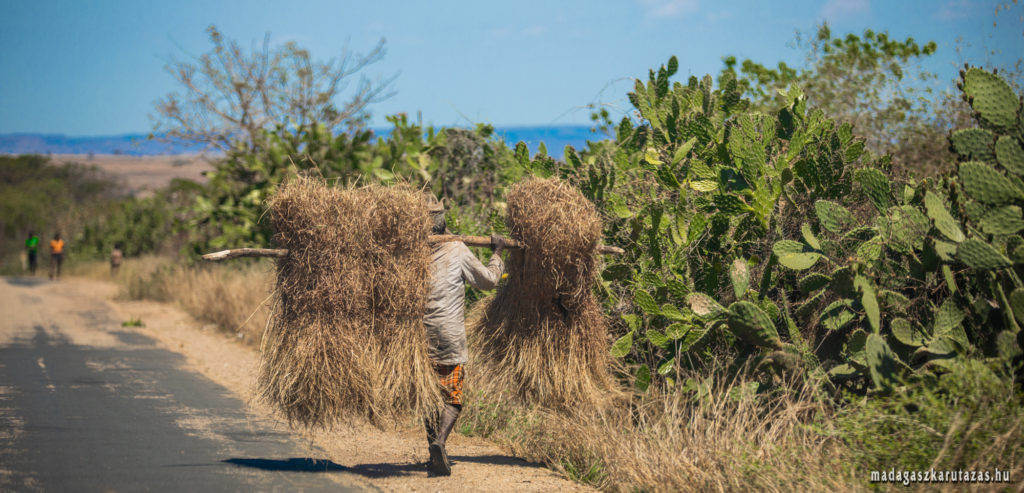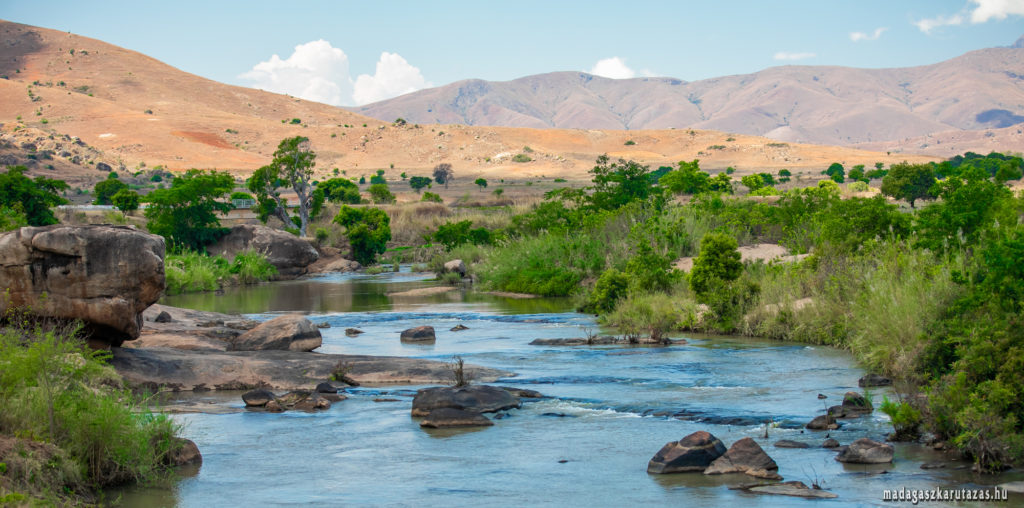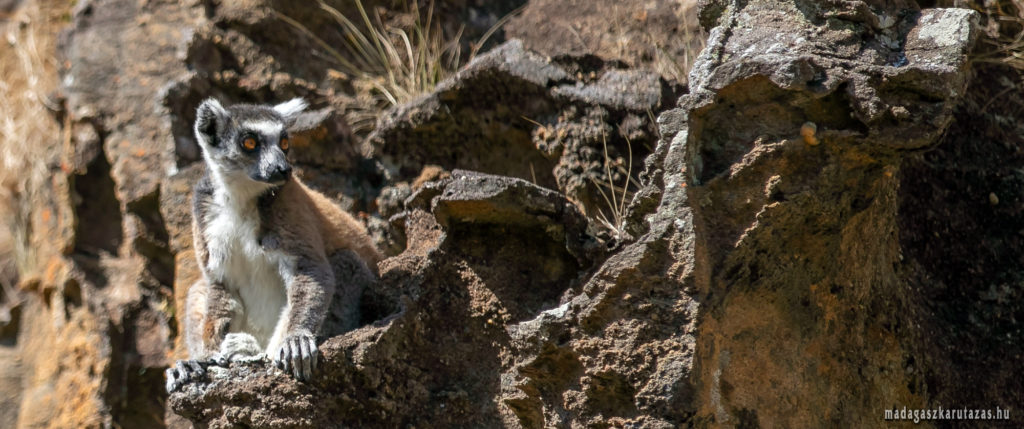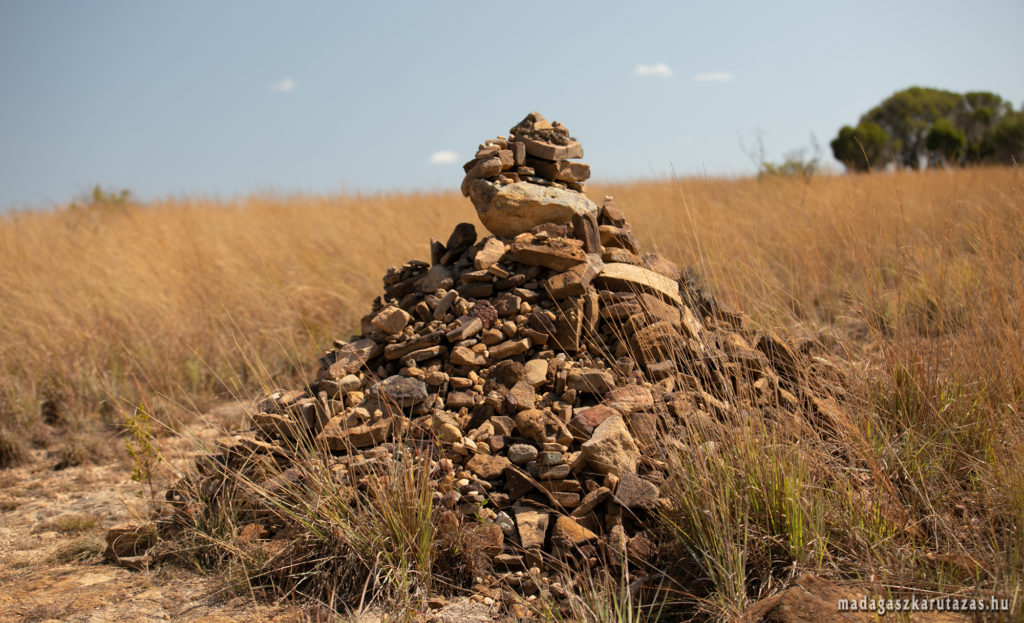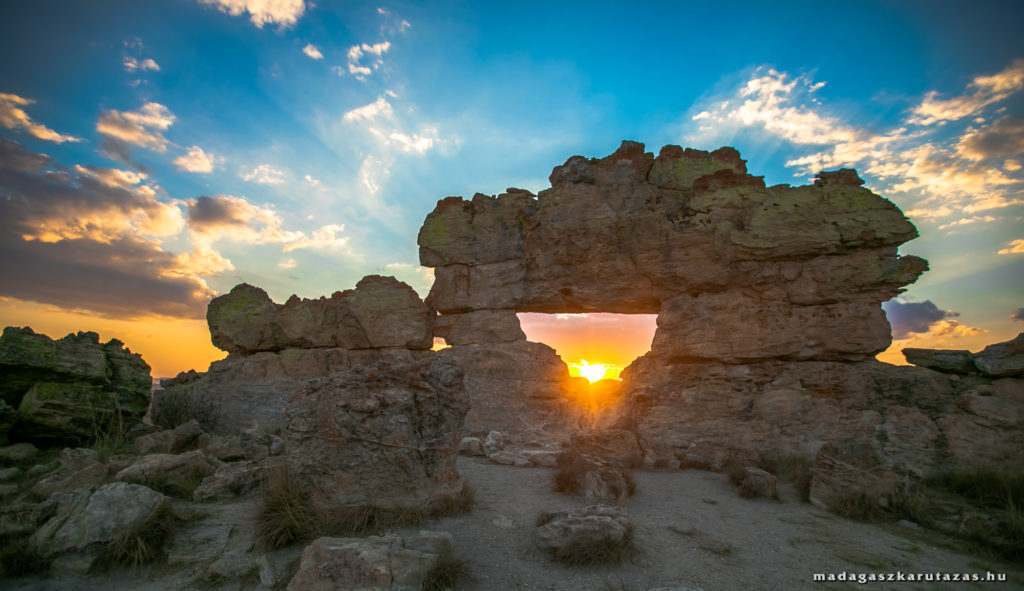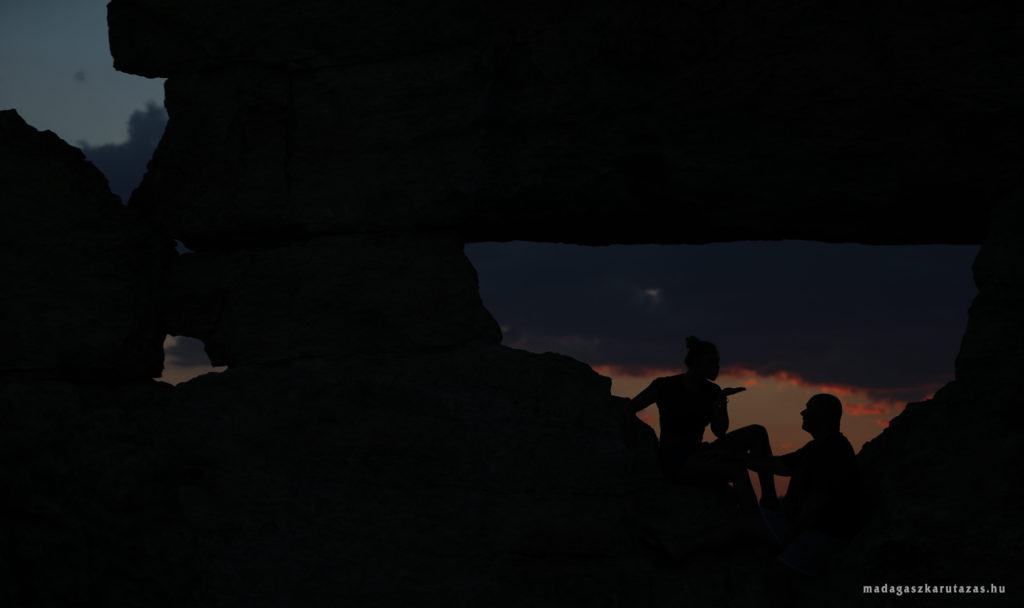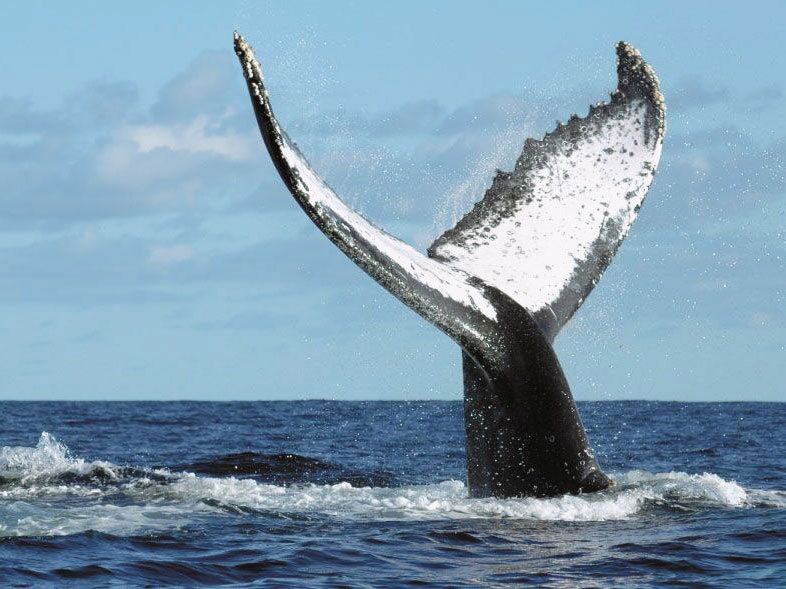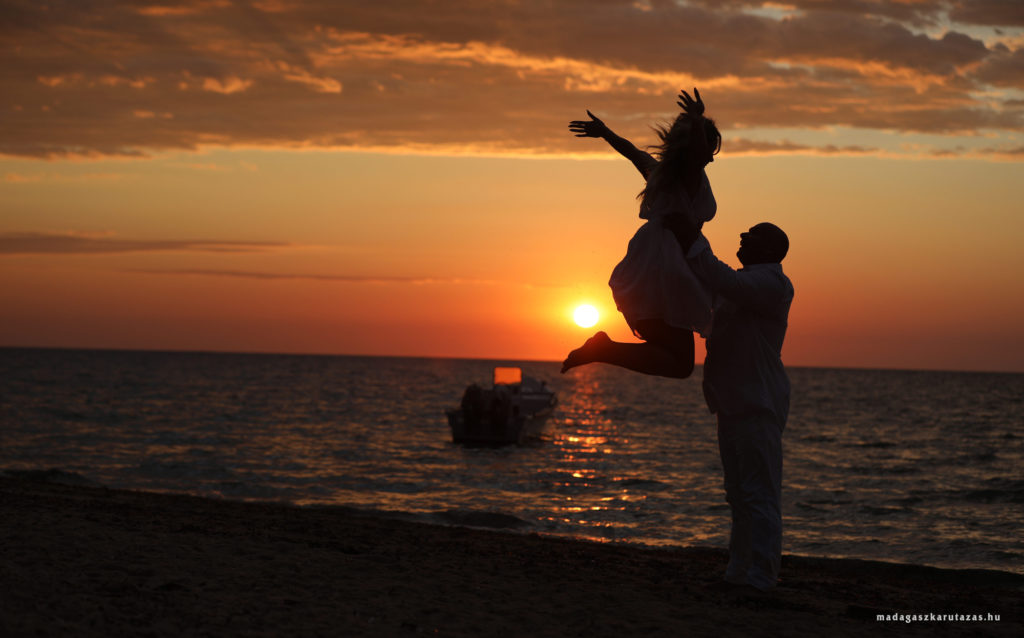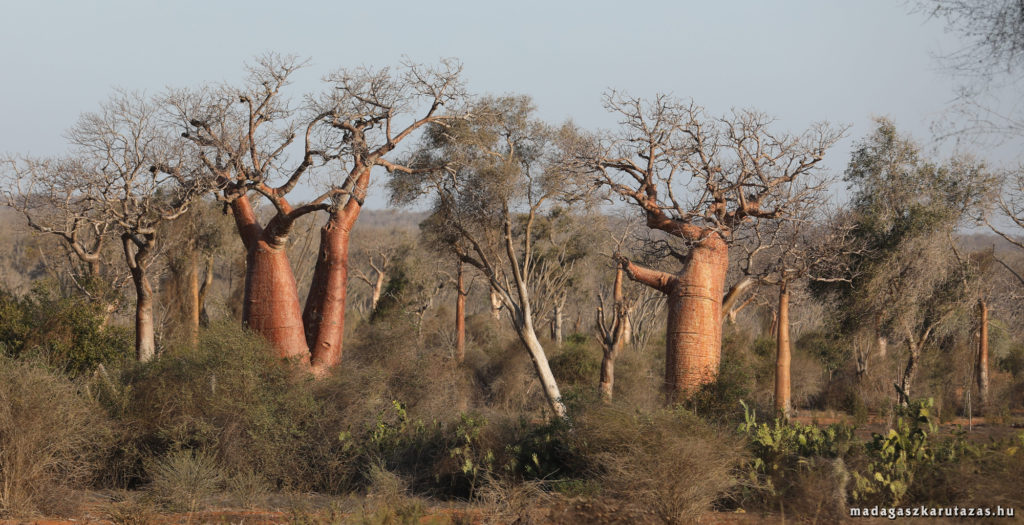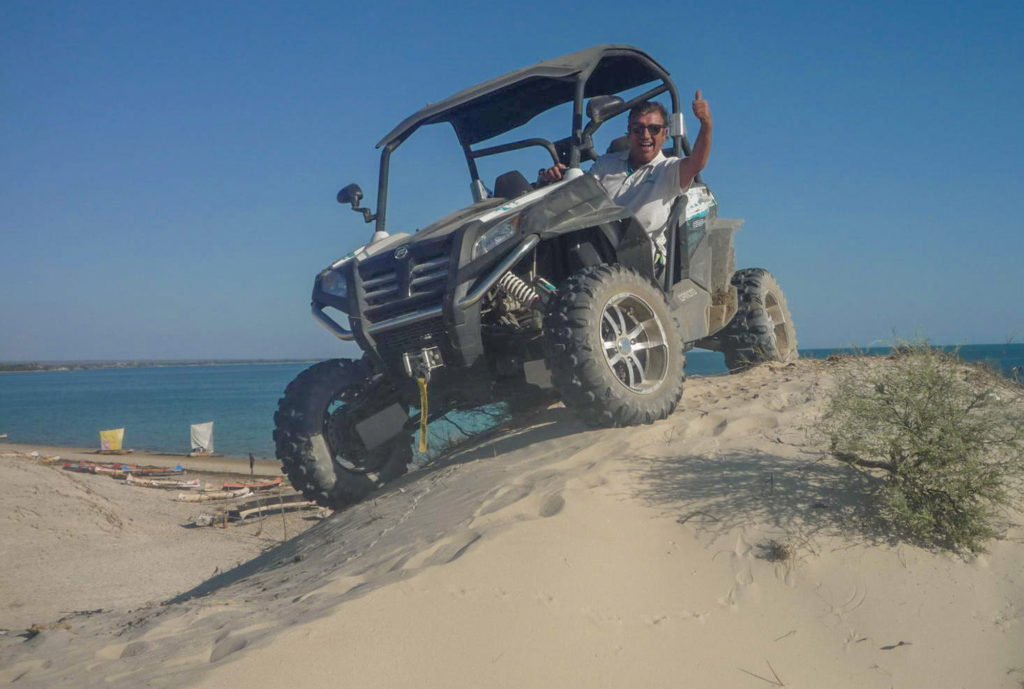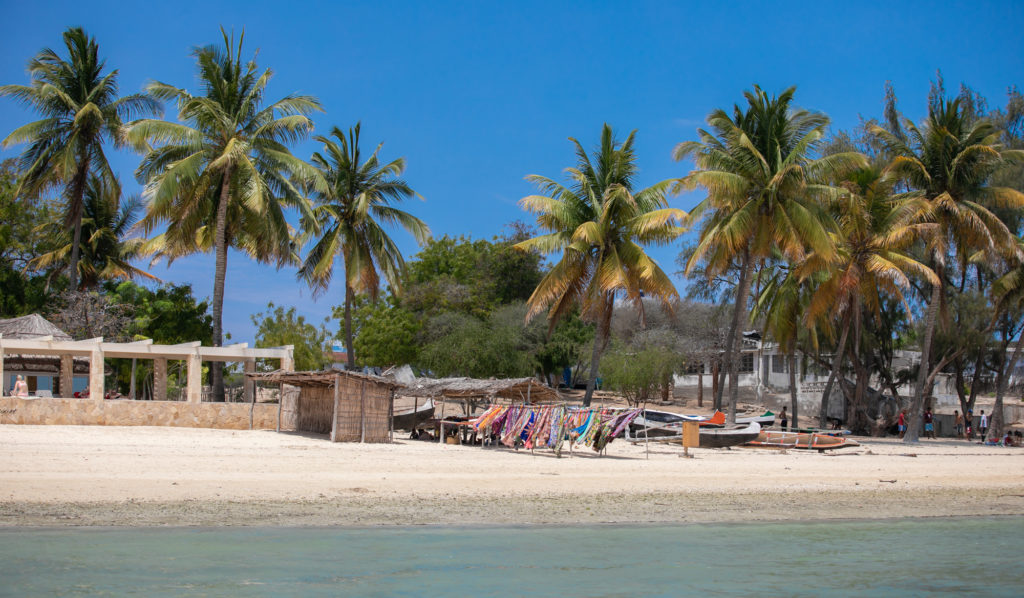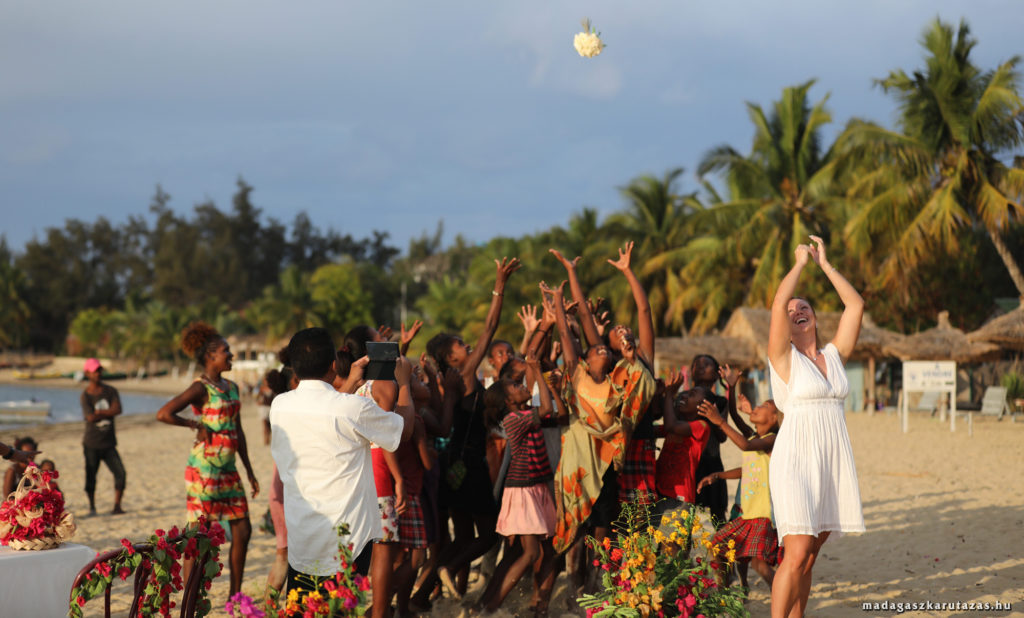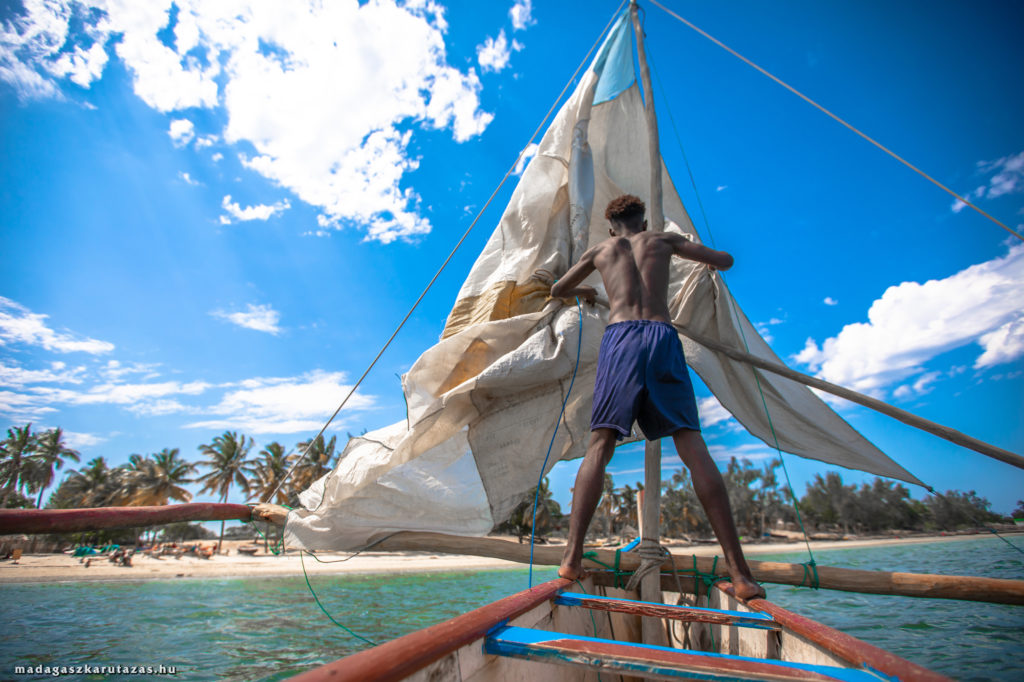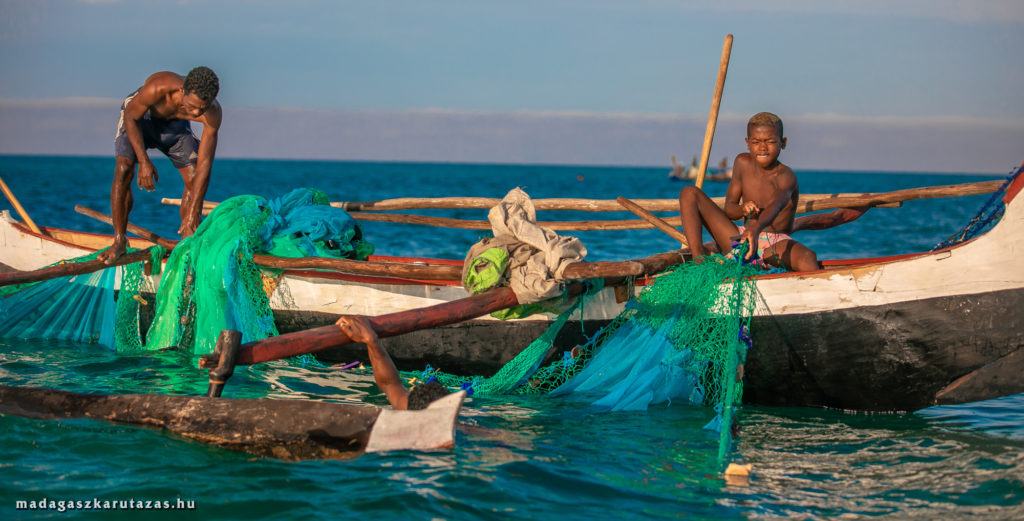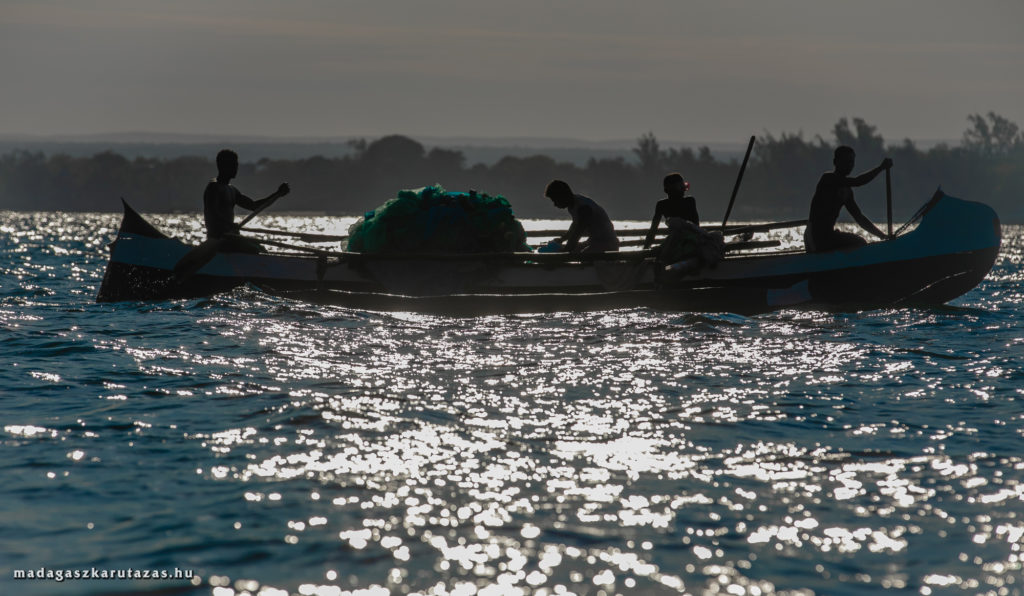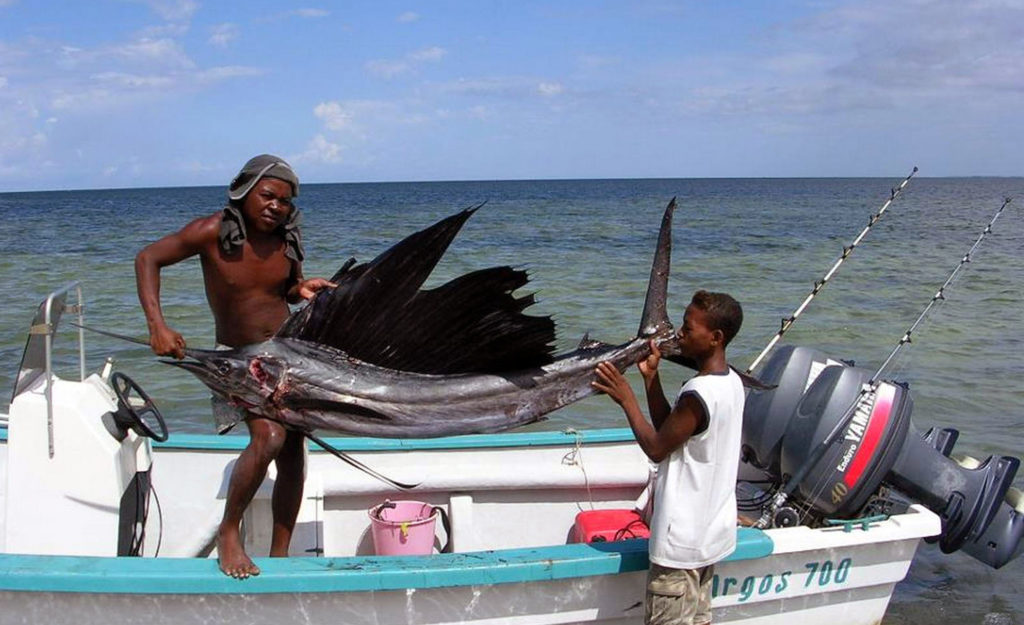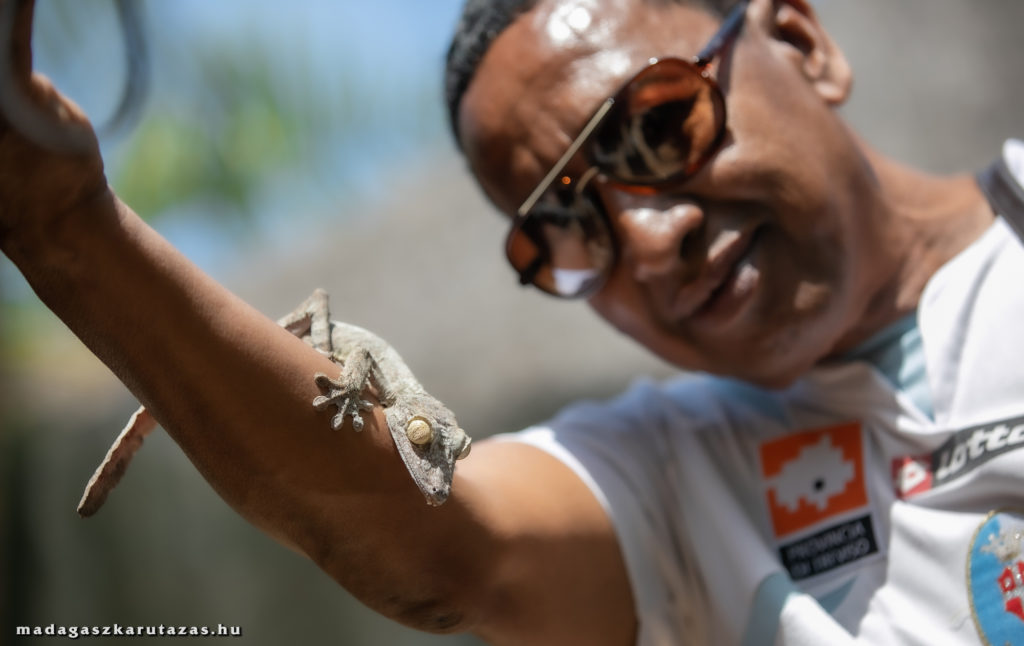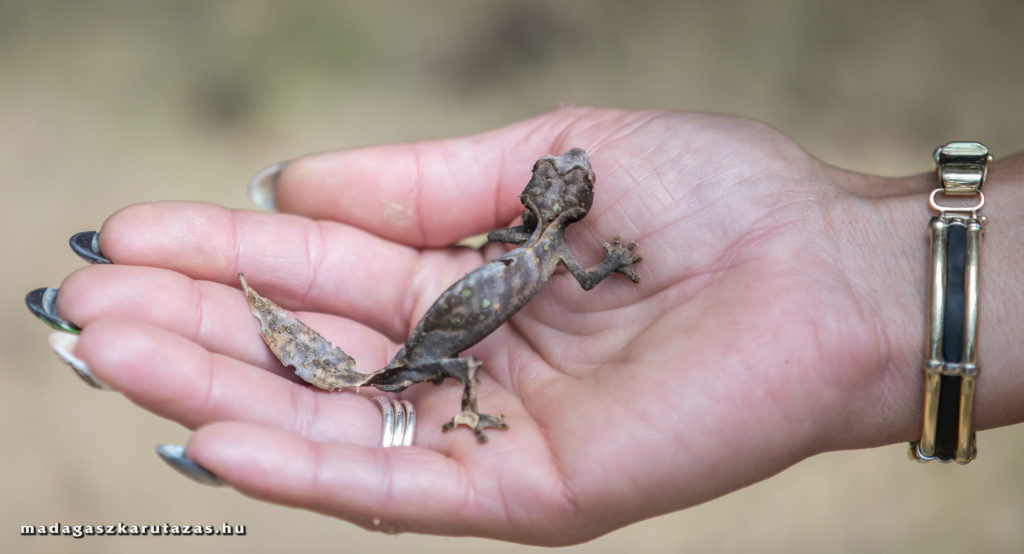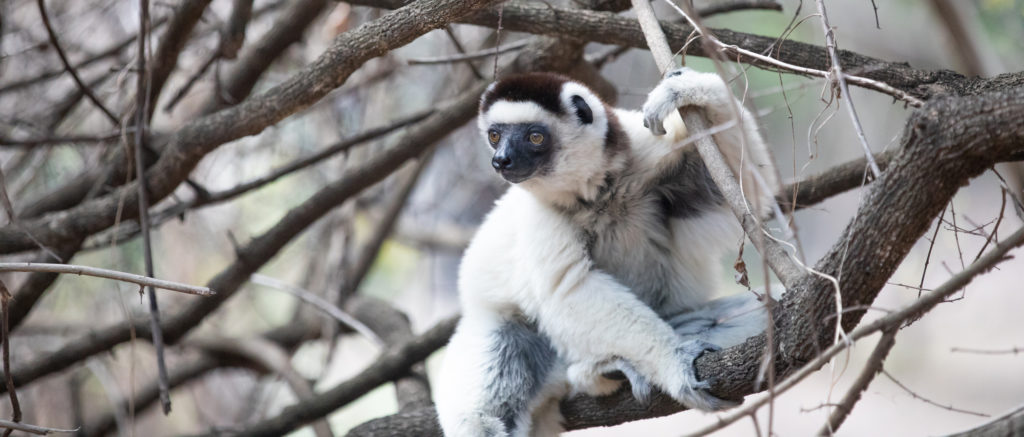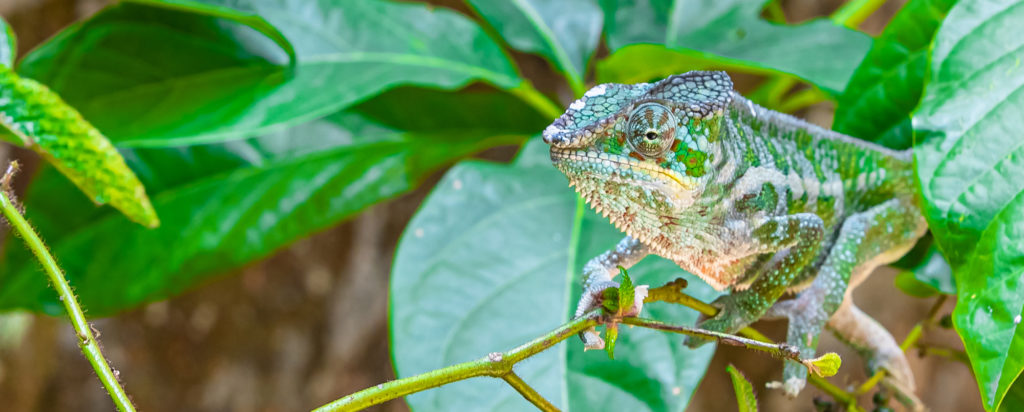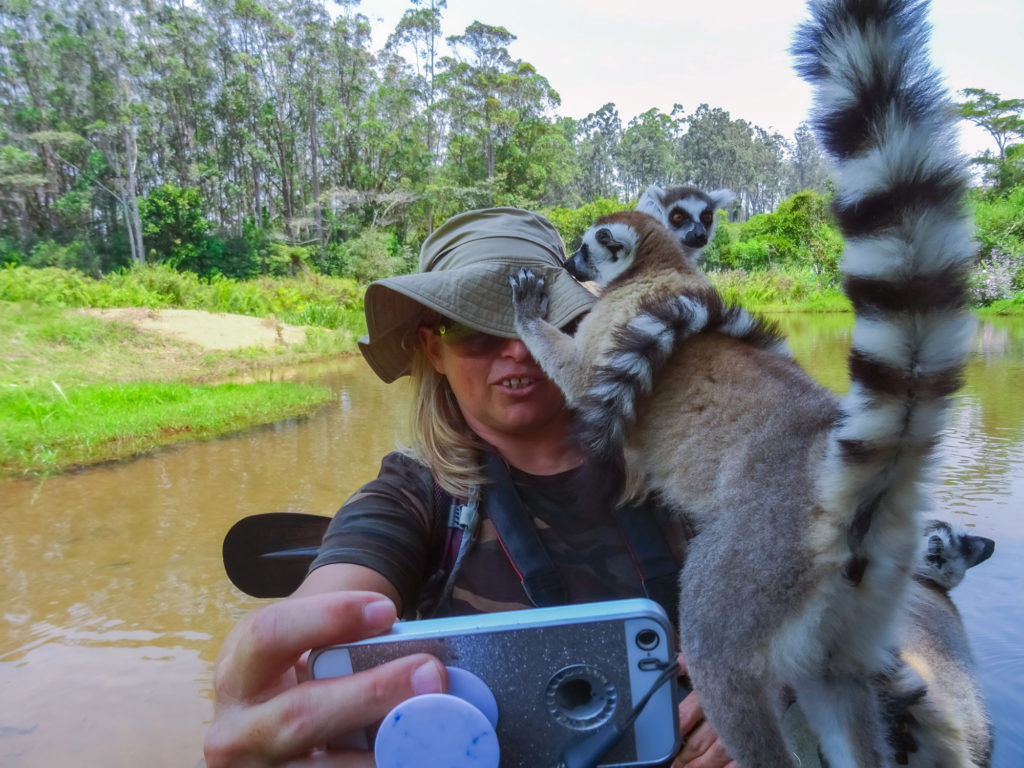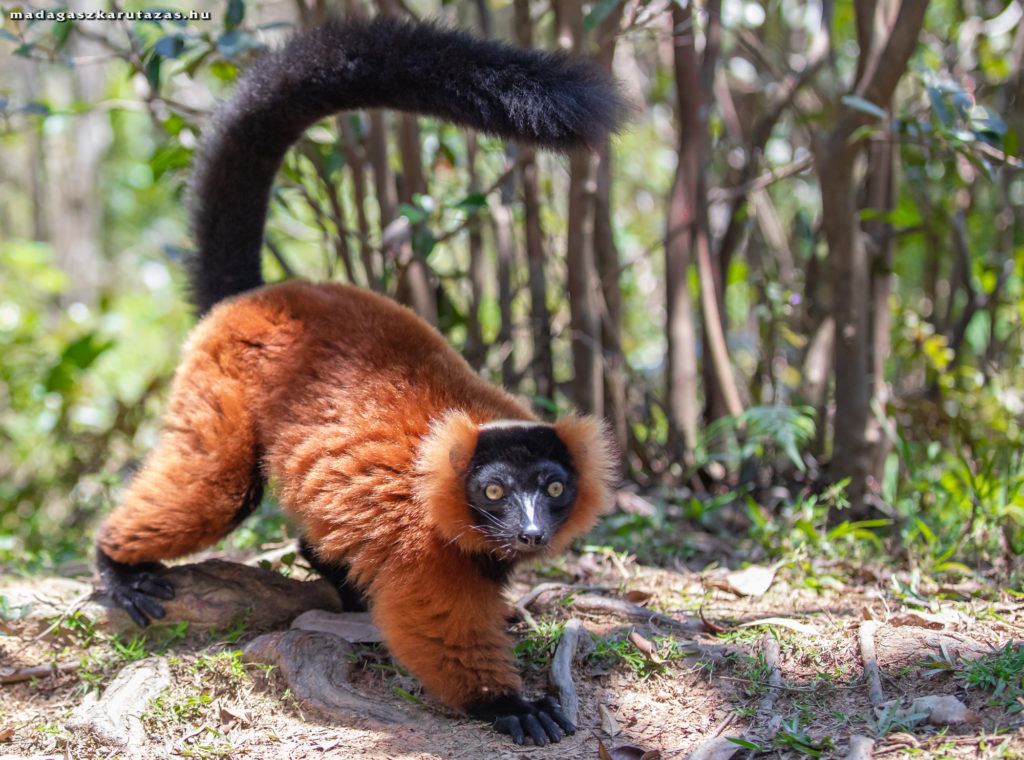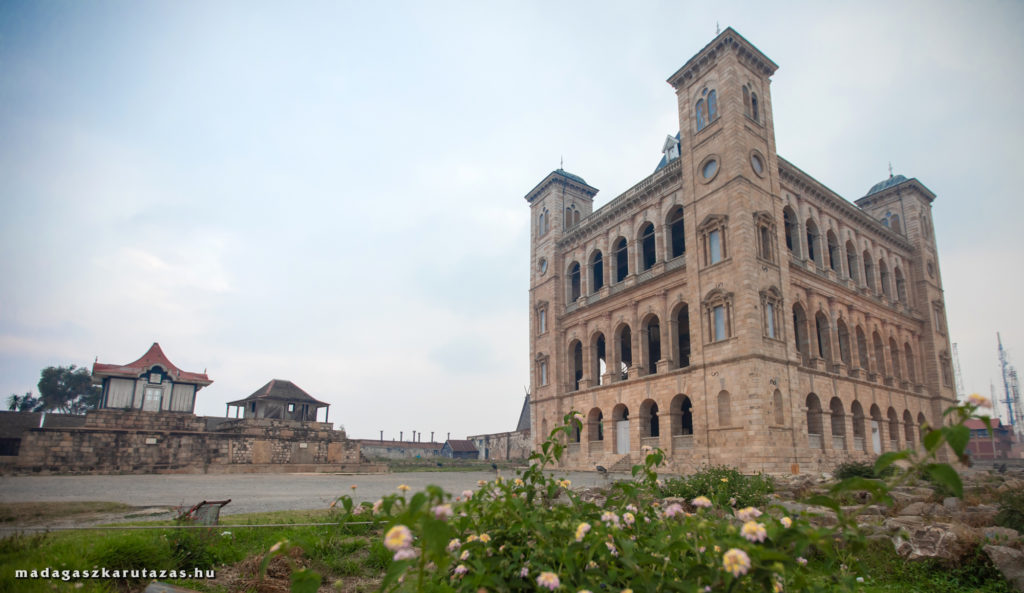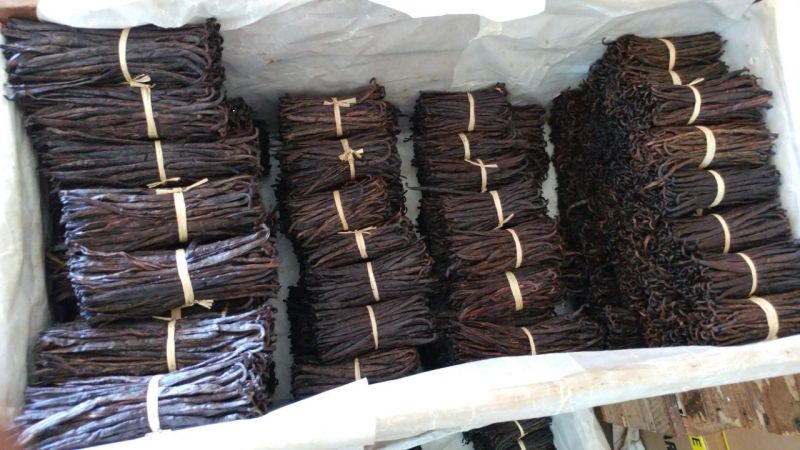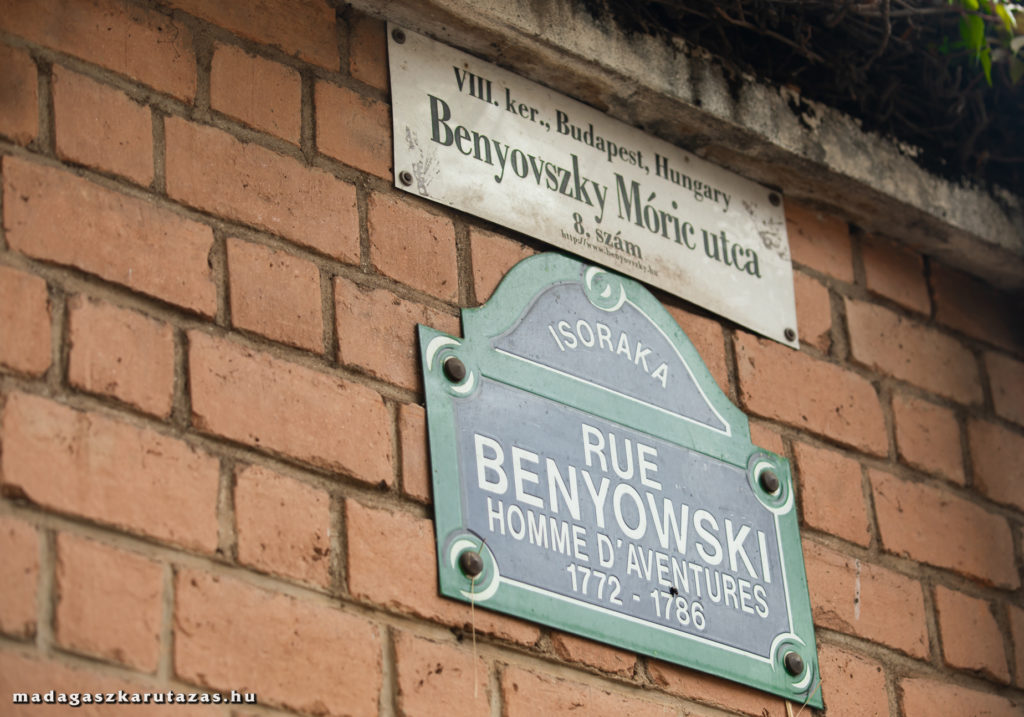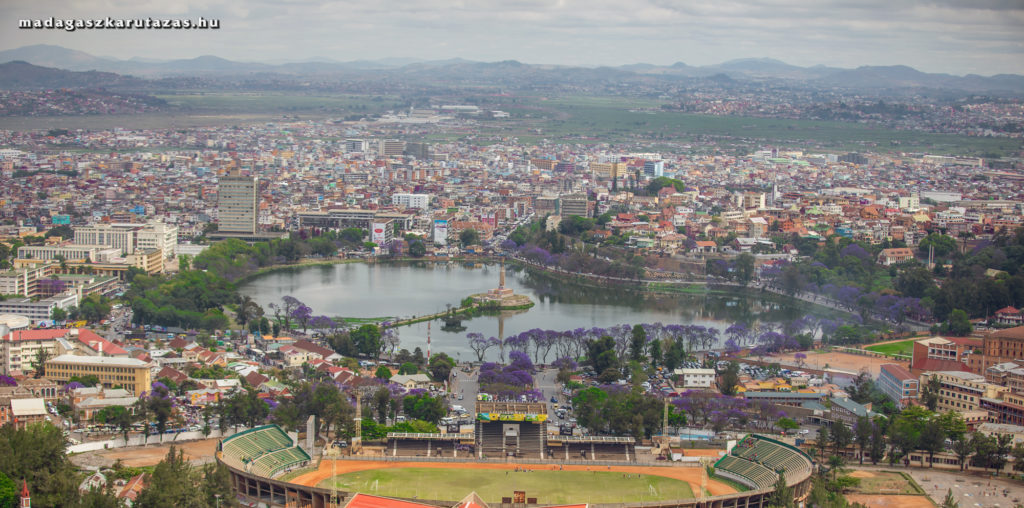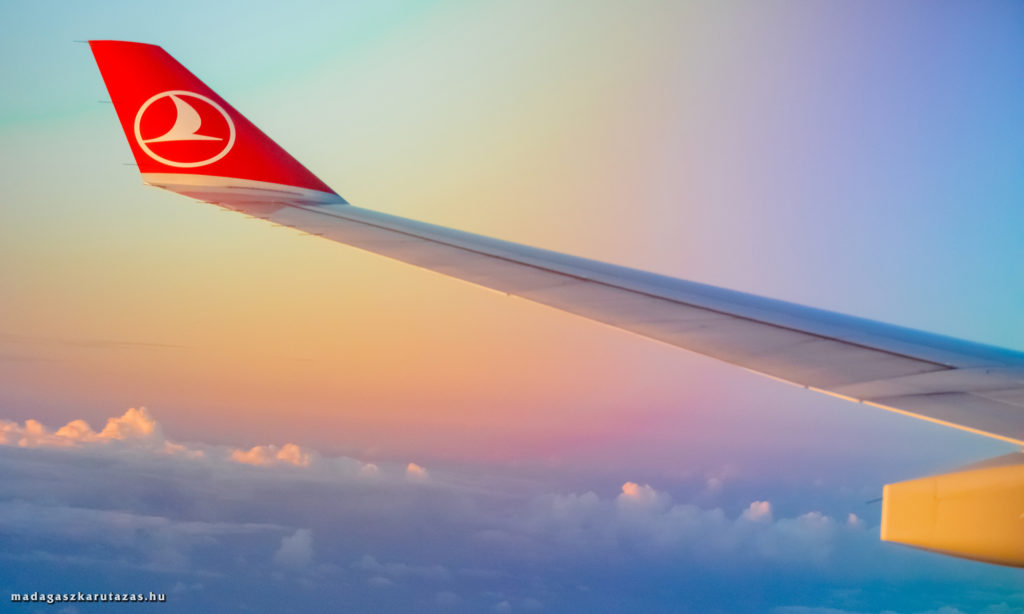According to Eddy, if you want to explore Madagascar for the first time, he recommends this southern tour from February to the end of December.
The program that Eddy and Antsahdy Tours usually recommend:
- Day 1: Arrival in Madagascar
- Day 2: Antananarivo – Ambatolampy – Antsirabe (170 km)
- Day 3: Antsirabe – Ambositra (100 km)
- Day 4: Ambositra – Ranomafana National Park (UNESCO)
- Day 5: Ranomafana – Ambalavao (75 miles)
- Day 6: Ambalavao – Ranohira – Isalo National Park
- Day 7: Isalo National Park
- Day 8: Trip to the City of the Sun, Ranohira-Toliara (250 km)
- 9-10. day: Holiday in Ifaty Beach
- Day 11: Return to Antananarivo
- Day 12: In the footsteps of Indrik, Antananarivo-Andasibe National Park (150 km)
- Day 13: Andasibe National Park
- Day 14: Sightseeing in Antananarivo, return home
During our trip to Madagascar, we are guaranteed to have the impression that we are travelling not only in space but also in time.
Detailed program
Day 1. Arrival in Antananarivo to the capital (Tana)
Ivato Airport – Antananarivo
Date of arrival. Our passengers land at Iowa International Airport. Since everyone travels here from Hungary with at least 1 transfer and a minimum of half a day, it is necessary to take an evening break to prepare for the big adventure. Those who do not have a visa yet will get it quickly at the airport and then transfer to the hotel.
Day 2. Antsirabe
Antananarivo – Ambatolampy – Antsirabe (170 km)
Our first trip takes us through the highlands of Central Madagascar: its beautiful, beautifully cultivated terraced rice fields, its simple, red-stone houses, its kind, direct inhabitants.
After breakfast we head south to Ambatolampy (70 km from the capital) to visit the most famous tableware and dish maker on the island. It will be a journey not only in space but also in time, as we no longer encounter such “rudimentary” but very people-centered workshops in Europe today.
We then arrive at the third largest town in the country, the town of Antsirabe at 1,500 meters .The name of the place means “ where there is salt ” – the French colonizers established a thermal bath as early as the 19th century. It is also the center of the beer industry…. so you will have the opportunity to taste the famous “ HTB”. We will also see that in this city rickshaws are driven almost barefoot even today (pousse – pousse)
Day 3-4. Antsirabe–Ambositra–Ranomafana (210 km)
After breakfast, we will visit jewelry making workshops in Antsirabe, where semi-precious and precious stones (sapphires, rubies) are worked, and then in a zebu horn workshop we can see how various everyday objects and small souvenirs are made from zebu horns. Before we set off for our long journey today, we will stop on the street named after Móric Benyovszky.
We head south from Antsirabé, next to terrassed rice fields. The city of Ambrosita is the center of wood carving in Madagascar and the residence of the Zafimanir tribe. Their woodcarving art is so special that it is still on the UNESCO World Heritage List. We will have our lunch at a local restaurant and then head on to Ranomafana. (130 km)
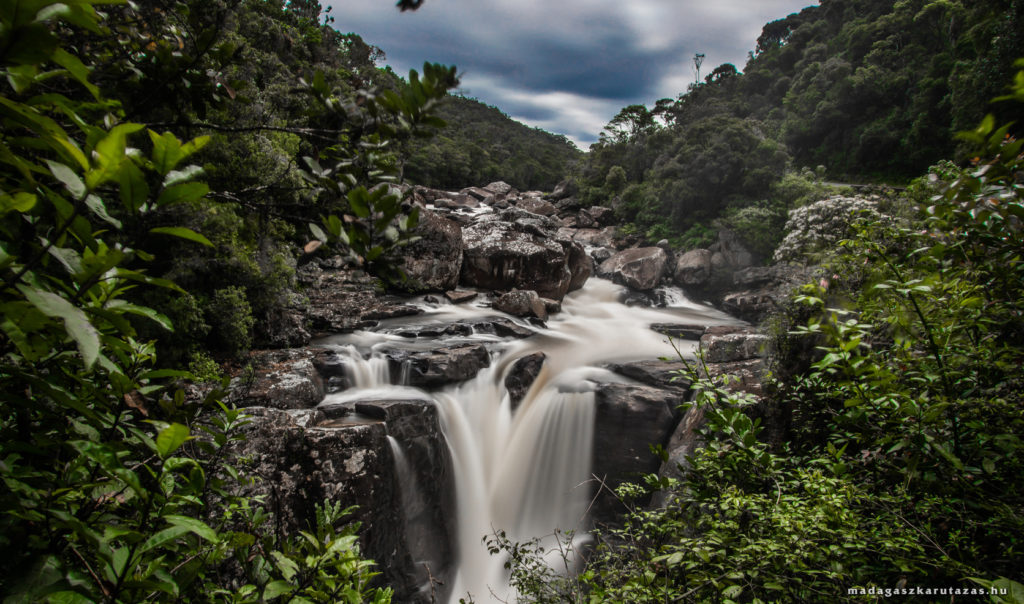
Ranomafana is a small town located in the Namorona Valley with mountains covered with dense rainforests, which is very impressive. Watercourses and waterfalls remind us that we entered the rainforests where it can rain all year round. Today, the National Park attracts the most visitors.
Day 5. Ranomafa National Park
Ranomafana National Park (UNESCO) – Ambalavao
In the morning we set out to roam the 41,600 acres of Ranomafana National Park . It is the third largest nature reserve in the country, home to many animals and plants unique to it. In 2007, it was declared a UNESCO World Heritage Site. Today we meet lemurs for the first time – 12 species live in the park.
We recommend boots and/or special waterproof shoes on this hike, although all routes are easily accessible, but they are constantly wet and since Ranomfana is located in a valley, there are plenty of stairs to climb.
Ranomafana is especially for reptile lovers: there are many wonderful and rare chameleon species here, but we will also see several specimens of the 118 registered bird species. Most of the animals would not be discovered on an individual trip, as many of them lead a hidden lifestyle, so only those people with local knowledge know the environment in which we should open our eyes well.
Day 6: Ambalavao-Ranohira (250 km)
In the morning we set off to explore Ambalava, one of the most beautiful cities in the country. The mountains, vineyards, charming, beautifully painted buildings with steep tiled roofs and carved wooden balconies impress us. But Ambalavao is known not only for silk production, but also for the handicraft “paper mill” from Arab traders. Like papyrus, this paper is impregnated with flowers and leaves and then used for albums, lampshades, or simply mural paintings. Visitors can see how women make paper from the bark of the Avoha tree by hand.
After we continue we will also visit the Anja Park , 85 km from Ambalavao , where approx. 80 ring-tailed lemurs live.
The park is also home to many bird species, insect species, endemic plants and chameleon species.
The rocky landscape consists mainly of granite, and at the foot of the “three sisters” (telo mirahavavy) lies a rock formation almost 500 m high. The many gorges and caves have been used as shelter by the Betsileo people for centuries. The ring-tailed lemurs in the park are used to people and are very close to visitors, which has made the area a small attraction for travelers.
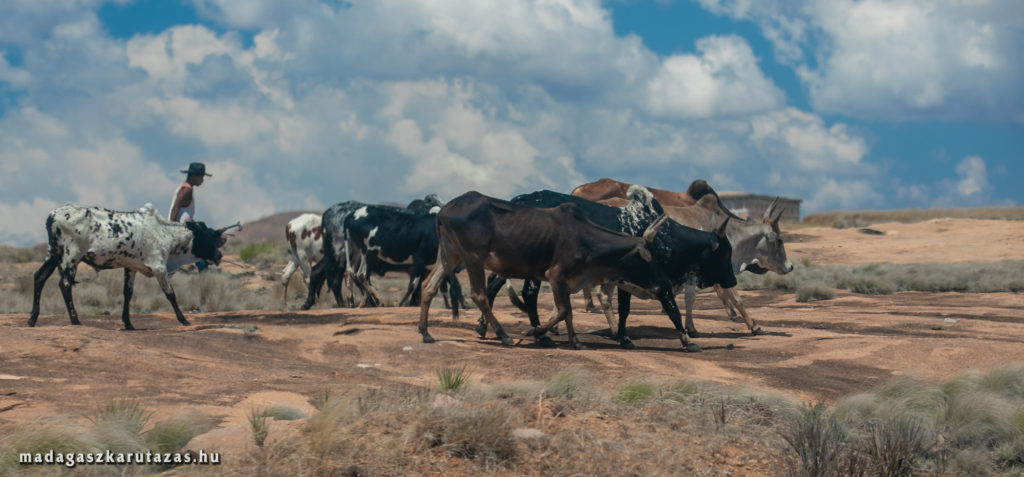
Continuing our way, the landscape becomes savannah again in the afternoon, huge swarms of zebuccoes appear on the horizon, we arrive at the land of the bara people.
Along the way, we see the life of the small villages, thus looking at the characteristics of the different tribes of Madagascar, as today we pass through the territory of three ethnic groups. The landscape is also changing enormously: terraced rice fields give way to small, mysterious villages lurking at the foot of huge gray cliffs, then to grassy-wooded savannas and finally to the thousand-shaped sandstone cliffs of Isalo.
Before occupying our accommodation, we visit the Isalo Museum.
Day 7: “Madagascar’s Colorado Landscape”
Isalo National Park
We take a full day hike in the 81,450-acre natural rock mountains, founded in 1962, which creates a true wild-western atmosphere.
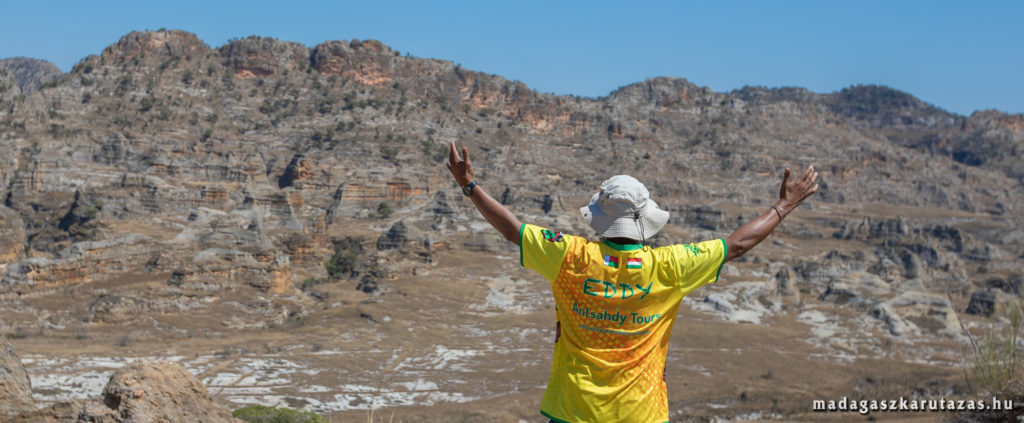
The landscape is dominated by huge sandstone cliffs, and canyons, narrow but breathtaking panoramic paths at the top of the cliffs, mountain springs, unique vegetation and, of course, Madagascar’s unmissable, bustling wildlife and abandoned green life. This makes our trip unforgettable between canyons.
Our evening program will already be in the Isalo National Park: let’s watch the sunset from a huge rock formation called “Isalo Window ”.
We will have a magical experience as the colors of the rocky landscape change in the evening light; we can take beautiful photos
Day 8 Travel to the City of the Sun.
Ranohira-Toliara (250 km)
We have breakfast and then leave the rocky landscapes of Isalo, which give way to the huge grassy, sunny savannas: we are already walking in the real south, in the area of the mahafaly and antanosy tribes. Along the way we can admire the beautiful, huge and richly decorated tombs: for these tribes are building more beautiful houses for their dead than for themselves, the living…
We drive through Ilakaka, the Sapphire City, and also slowly see the first monkey bread trees as we arrive on the shores of the Indian Ocean, in the city of Toliara, also known by locals as “the city of the sun,” or “the city that never sleeps”. It is the third largest port city in the country.
After lunch, we travel from Toliara to Ifati, one of the most beautiful beaches in Madagascar, 25 km away.
9-10. day: Holiday in Ifaty Beach
beach vacation or a selection of optional programs
These are the two days of your beach vacation. After more than a thousand kilometers of travel, we will relax on the popular resort beach of the Mozambique Canal. There are beautiful coral reefs near Ifaty, so you can go diving and scuba diving.
Optional program options:
- diving
- fishing
- sea fishing
- quad biking
- whale watching (July to end of August)
- turtle park visit with zebu cart
- wedding planning
Day 11 Return to Antananarivo
Beach time or other free program in the morning, return to Antananarivo in the afternoon with a scheduled Air Madagascar domestic flight.
Day 12 in the footsteps of Indrik
Antananarivo-Andasibe National Park (150 km)
We visit the private park “Peyrieras”, 72 km from the capital, where we have lunch.
After lunch, we continue on to the Andasibe National Park, which is a great place to observe the Indrik, the largest-bodied lemur species on the island.
Day 13. Andasibe National Park
After breakfast, we hike to the reserve’s forest called Analamazaotra Special Indrieji, which used to be a center for wood processing. In the private park of Vakôna Forest Lodge you can play with lemurs and make friends with them.
Return to Antananarivo.
Day 14 Sightseeing in Antananarivo, return home
Sightseeing in Antananarivo, during which we visit the XVII. Ambohimanga Palace, the adjacent lookout tower and Benyovszky Street that were built in the 16th century.
We visit some shops selling art products where we can bargain, shop and get acquainted with the applied arts of Madagascar. Here you can choose from thousands of vegetable fiber bags, hats and toys, silk scarves and jewelry carved from zebus horns, and buy original Malagasy vanilla and spices.
At the end of the program, the shuttle will take everyone to the airport so they can share their experiences with their friends when they return home.
If you got interested in the program, please contact Eddy.
Antsahdy Tours / Eddy Raharolahy
Phone: +261 34 29 490 37 / +261 33 11 746 34
Email: eddy.raharo@moov.mg / madagaszkarutazas@gmail.com
You can also find us on Facebook and send a messenger message.
